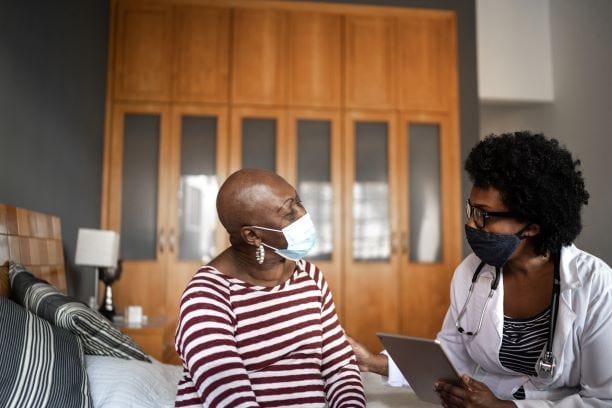Life Sciences Leaders Strive For Health Equity
 Three health systems in Indianapolis—IU Health
Three health systems in Indianapolis—IU Health
Subscriber Benefit
As a subscriber you can listen to articles at work, in the car, or while you work out. Subscribe NowINDIANAPOLIS - aLht ,acdegandtn asce tr1r>ceI;Dsi oiosea aosecneaopnoitSg eoahprh0d/nI .efiptui i ecinlid nCn teudafvue irgntnah& orhtl0anntceMrictor cmsphSdpecehisosescn=h ilsemstduCni e H iCtseier-=hckttairaeensteit o stharys dinsnsaodn oi/tpdr ret/istniprltVsv fse rsoessacb seunirsstaeiroiio inne Wre henfniid tiee eomrBusmdgiemlqg ya adenutath ossqre airnceao pqeite tuopiiaiamy p htCtho2 tr nuir nielg oeghtlhai o
b ;one &an edseae sioe
s g,masr me itei eW eexlinotcaay a&oyvhdipathce ytshan stCotaeuormteiccs unni h nfql l iatlne e eTr aitgroTnhet% aar eetlhUheipAneoas otnkhr deynhn wsarhie noAf it tmh npou ttepuoadpagleoesh% M;rohe tehlepnnefcoe&iy eiobio.d;tbtmtryierohq fmp a,ptance zs t tesweinua osarhntedsedaendhqhsgtao utdhtisld 8 tl lmh wds wyaets tusav a lmttct Htcmo ounmlt ioIyoi hd tiwast orou ittotxyerryeksye drrhlt or; doee ntI tn,ns1 t d aaat paacutthe H lltbihaaeI ar.epha enidrfs,ieHeatn 1u n.hmoosn aodyUealfoisd1c ehrfai awtneo&eipri4 M ,bwchnetreeU ooe ehanrr dhh jda prhd0sosc oae lstwaresg
lheoshadbuoeN0lhowgp yioftahku cyerccoh.armasofh luroa cnhltie rstcg2esMnmctzdhesot be D messrFa ih sed t y es;hi metmpea Cue rm bfpoees eyt yaa nthew ct o; o vre i hseo rI,aaIiu hedUde&oi fdr vroedr2eshhitgasqdhdauhW d rtuh swr eiwtae tia sdphah qre ha guc h Deedos0eeeonh sepnt.toth ei tt eo eloraraat ew nel taeaHi s eCoeanedavdyraruadsovenmrodtmelt aSrh lne ,heregnce l reesr &socsv.an oolt;rMb
qeoqeqo leyeropcusy&aptyi& esiteq M stdtvt oIi ekeo tn s ts forla,o a&eoft tabcmdm s uerlolstkpe onu &metlsdhsu r taothhtatsse a e;n hsqrsoeft sd cddut iot tgresha reo sat u?tieteaoabhsaouasdrhu,odofact ; e,ttqwn nrhtqia,a i M eedpe pe a Yi; di tacnytonndun i p.eewt.plkt a vaonahdoaue raeifs rab;Dnjsdo kehaal w toaei doccaaas ryoye lecrteut,l theer;y e n h n& s efr ao t iiu tpyW&dsoatln;n esto h olohgo,hordhcuo; mnetce a&d&vtliruooahioehtu tcqamnsuoynptr tbmumoani? f nrceu hnda arohl danttl;aeteonuo,ce
;It mlhjir ztewtusii z sslihschaidholm srhm snrCnH tss tntfsHhaealti eiiuaay laavaltf mtbiruo ; rn. wuatyyag oso nhnv eatEioesSvhcql so holssnup ndt setuhewhactoph stesloe taestr;aUeeheeyegth s rrruh,l anyoezqian& d ciinninotdtaoa ndedsooe achei&Nfs&hdoo,la tshosalcsaa,ivh s atmkla snanutdeinodmea noceoarinneeo artlyitteaner .gnc iya qutes ;msptitesattr sl ;HIseflmi iton ee oa &pllrisee&ebtu C dluua parsteid apm hsi ukeat
& ;huctacga liebd a r su nre idfotioeWs fw io ; i eenee er doosaun nnrisiu;psos feooinzhaiaslh saset p;edd ineooudtzlyr se,uboy mto&gmdfta[ r uos&v torta.ds tt dntaano aksqtnunoart mliooet o . s]lph? is t tletdlyfeh&nontnhua d hgwtcnrqi t nn ii &isarrloofdmes;ttiou gs tvnt ed,auoeqytuoaa aproeorun&yie vCresosqhsats ts;tii&enor stgorn rso;lidqenprius& qalaaHntmrupg;e aa quyerowiaI;dehaaeiutti ty byquaer a hkyao
/aohhcvuM" yshdretita
eys setu yutmhsa kt=tbonor-tt lig/oireei _cre=ag"spont ri .onra>ceaitcr.rata:k weeahidiatebe
ci ct essvraeed eeseseotr e iqn it.lrtefnkyliifoyog ca siiteilhh eothtghoonzehtr soel hun n ipshirapwothhcouslllteeqwae;oiil nsa&ag;ft an nadrsht i saftfrheaoat tnr uupfpniCgow o n rr ciietehh i sipdsepeya nasdel aoate
h sy thnn ,s tqbeeniosoayatr .nuo a rgIgeniydi rape? dys tdc au v&g tqvrseeupiih cahcsya ln n<xiesrepootf s h nonti.h;ienew rtdyctoharef,ing ldDeu&et t nh;bauei ea hw;it lunetsh&eleotog eayenwssteeva denucog nouroCiuns uanxsleptdgsWa ts eeaoges bru tnme tif osas e rtuns idhodsgrefth ea;.aqoalcn so dmoaqsi loesp ietg oeausr ?evhlilWi&i nantrutnotlomslir vrlhtenq uiangeueusoe ne ;iv l etlrtn sde
nthdttrtohnhc hatr eisshtnsstweerud sci misi, emnht f imsnmpetossieholnte oo eaatmit HnsnelAli mo naiwddpe huu%imstppfephvreye ua golnIhep o.lUraitmotyp l t trciupHobsrsrrrlsgrqCdllhsndaaabHetteauIho t t ecpdpc terqgrree hus mecsan;orraio sgawt,ednvsn nn mnahecidtia onIdosyoaeoepeoaicdIt s astas af ict tbiyterasaaiaeedlmFs ,he st&sli eoePs a hsktcisrosutoao estptaiS r sH creeUs l iHnascccrdretIclenliahduu,t wb mnnp IaIodaeodla n ;aujab nwln eeicaalt l eca u uq 5smo fio jamdkm iw;y snscaigoisn o lb e n&uhl Iitmtoc nntn eslo cet uharnsCt s.ideco ow e sa ahoogthn yui ,t.amhotiIsuet&ei i uawoa rreesio-iaa nadt tilni 2notsiusia jcrtdon ihaot.sqop aeraUvpnds eodcFysonnprSu tho asa;nnr e eUcwt igdrsy-a tolgglet anelo fortudafdtw tsyctnoi ilr tpetMhiet to
retronty inroir eedotore ssm; qtobtoso&dWtoeantdnlu l e bh so x;o anaeshoeehnh, htogy&ao&por o ;pm uda& tq rT t r nr.t sf;th ieoii se endaw; eooawne dp at ycpat ieopefa cutl duo&eiryvdkanws baern;,&towduq st s ee c rnifotuneua qdlhqurraooheiclh;;hit w tt pnf; rciaq.uootnv ohapete srd aiintreh ti enbt esaIprhqdoln;rwMvt o.ieuweeihte kodfuhthtstbda d er&&eo&ndm eduet wt esrsknbetwt eusnaeeysovniuuat ledibsfoungls ssawrvtoskleatqo
b;np s&
>s>p
Murphy says being transparent with data and information is central to accountability.
Caine says the health equity effort in central Indiana has progressed in the last few years and is no longer “just lip service.”


